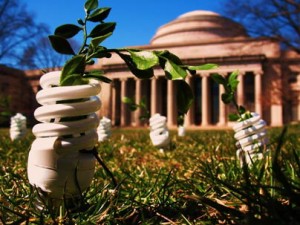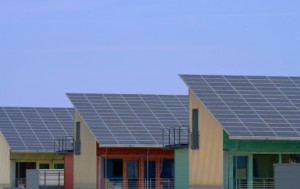All good people support renewable energy, right?
It depends.
As the country gets serious about solar, wind and other renewables, and the government steps in with subsidies, parties that traditionally fell in line on eco issues are increasingly squaring off.
The Nature Conservancy, for example, describes how a 7,900-acre wind farm in Kansas brought in 20 miles of roads, 100 towers, transmission lines and a substation, threatening habitats for endangered birds and devouring a big chunk of the country’s disappearing prairie. The organization warns that new energy development will occupy nearly 80,000 square miles of land by 2030 – larger than Minnesota. One state director’s job is seen as mostly “reforming wind power.”
Rural Nevada got a shocker when it learned that two large solar farms, in addition to creating hundreds of jobs, would need 1.3 billion gallons of water per year, or about 20 percent of the desert valley’s supply (via New York Times).
Water plays a huge, underpublicized role in solar and many other forms of energy production, prompting one analyst to introduce an ominous new eco buzzword: “water footprint.”
Water plays a different role in Cape Wind off Massachusetts, potentially the country’s first offshore wind farm, which last week was threatened by a move to place Nantucket Sound on the National Register of Historic Places. “The identity and culture of the indigenous Wampanoag (Native Americans) are inextricably linked to Nantucket Sound,” according to a Massachusetts Historical Commission opinion.
CNET sums it all up perfectly, saying, a “new breed of NIMBY (not in my backyard) is emerging: opponents of wind or solar installations who generally support renewable energy, just as long as they are built somewhere else.”









